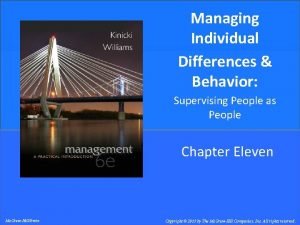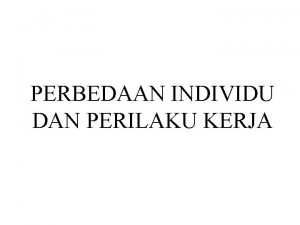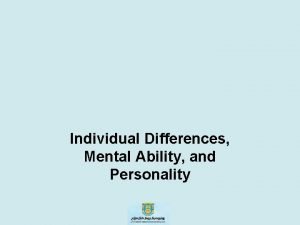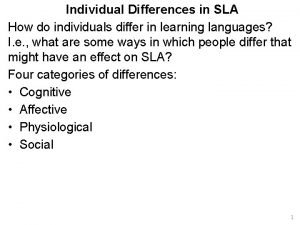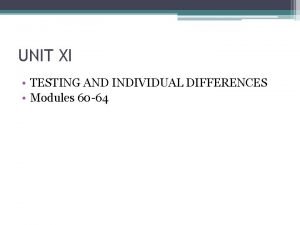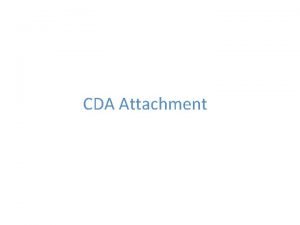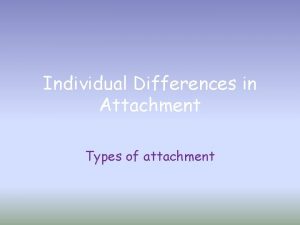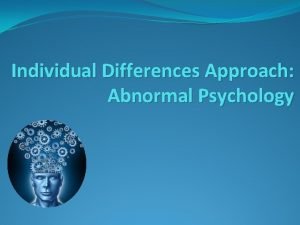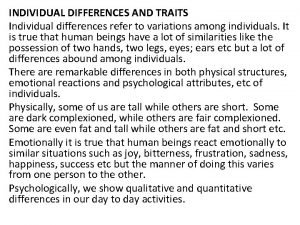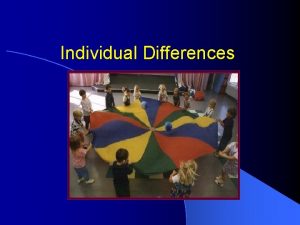Attachment Individual Differences Attachment is not an all








- Slides: 8

Attachment: Individual Differences Attachment is not an ‘all or nothing’ process There may be variations, or individual differences between children in the attachments they form There are different types of attachment: Secure vs. Insecure

Ainsworth & Bell (1970) Controlled observation of children’s attachment behaviour using the ‘Strange Situation Classification’ (SSC): ◦ Mother leaves child in unfamiliar environment ◦ Child is approached by stranger ◦ Mother returns ◦ Looks at separation protest, stranger anxiety and reunion behaviour

The Strange Situation

Ainsworth & Bell (1971) Three patterns of attachment: ◦ Secure (70% of sample) ◦ Insecure – avoidant (15%) ◦ Insecure – resistant (15%) Ainsworth suggested that attachment type was determined by primary carer’s (mother’s) behaviour and how sensitive the carer is to the child’s needs

Secure Attachment ◦ Upset when mother left ◦ Happy when she returned ◦ Avoidant of stranger when alone but friendly when mother present ◦ Will use the mother as a safe base to explore their environment Associated with sensitive & responsive primary care

Insecure Avoidant ◦ Unconcerned by mother’s absence ◦ Showed little interest when she returned ◦ Strongly avoidant of mother and stranger ◦ Stranger will be treated similar to the mother (does not seek contact). Associated with unresponsive primary care. The child comes to believe that communication of needs has no influence on the mother.

Insecure Resistant ◦ Intensely distressed when mother left ◦ Apparent fear of stranger ◦ Clinginess mixed with rejection on return ◦ Fear of exploration (insecure behaviour) Associated with inconsistent primary care. Sometimes the child’s needs and met and sometime they are ignored.

Primary Carer’s Behaviour Towards Child’s ‘Working Model’ of Itself Positive & Loved Unloved & Rejected Angry & Confused Secure Avoidant Resistant
 Managing individual differences and behavior
Managing individual differences and behavior Managing individual differences and behavior
Managing individual differences and behavior Individual differences in second language learning
Individual differences in second language learning Catering for individual differences
Catering for individual differences Makalah perbedaan individu dan perilaku kerja
Makalah perbedaan individu dan perilaku kerja Pengertian perilaku organisasi
Pengertian perilaku organisasi Individual differences factors
Individual differences factors Individual differences in sla
Individual differences in sla Unit xi testing and individual differences
Unit xi testing and individual differences

